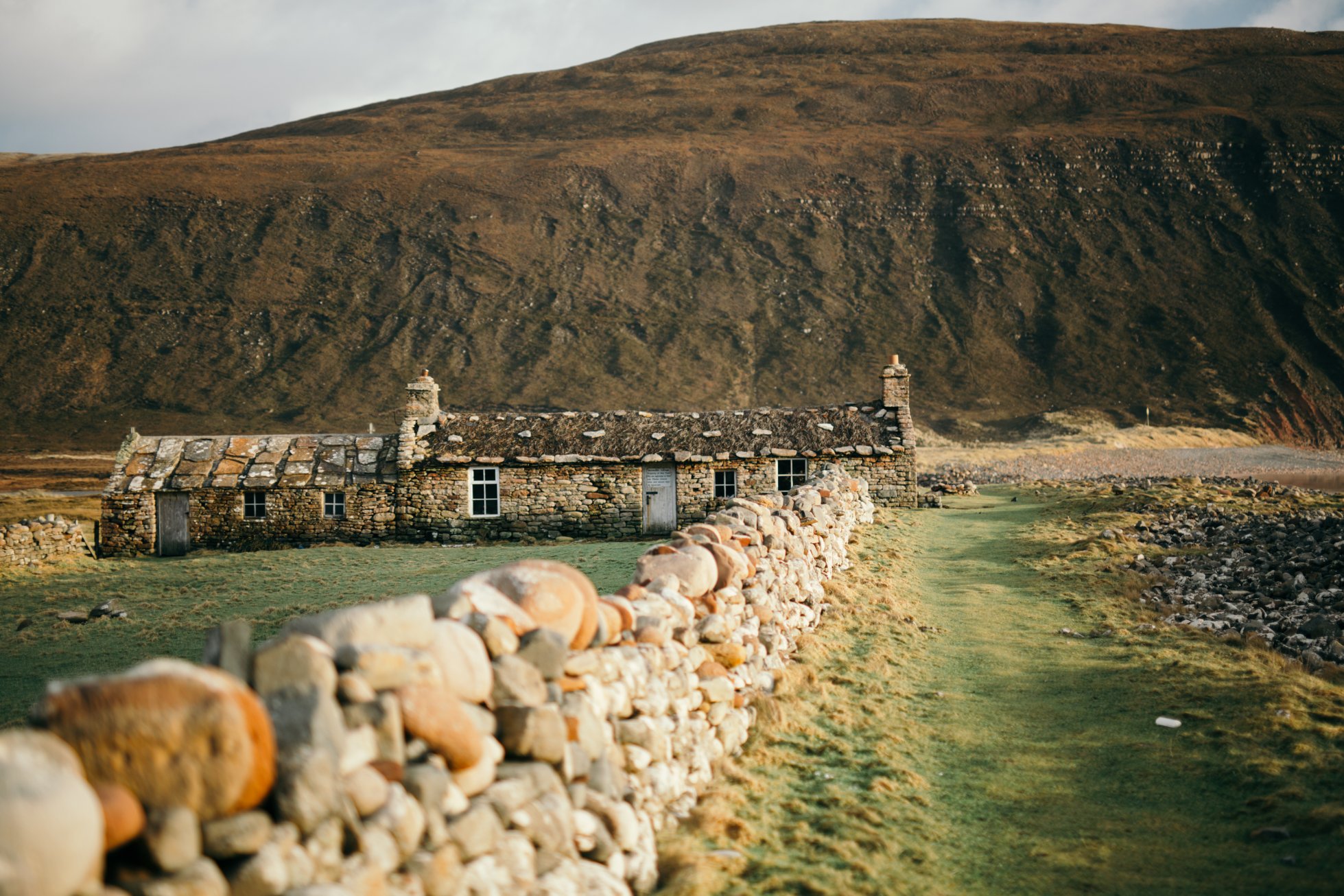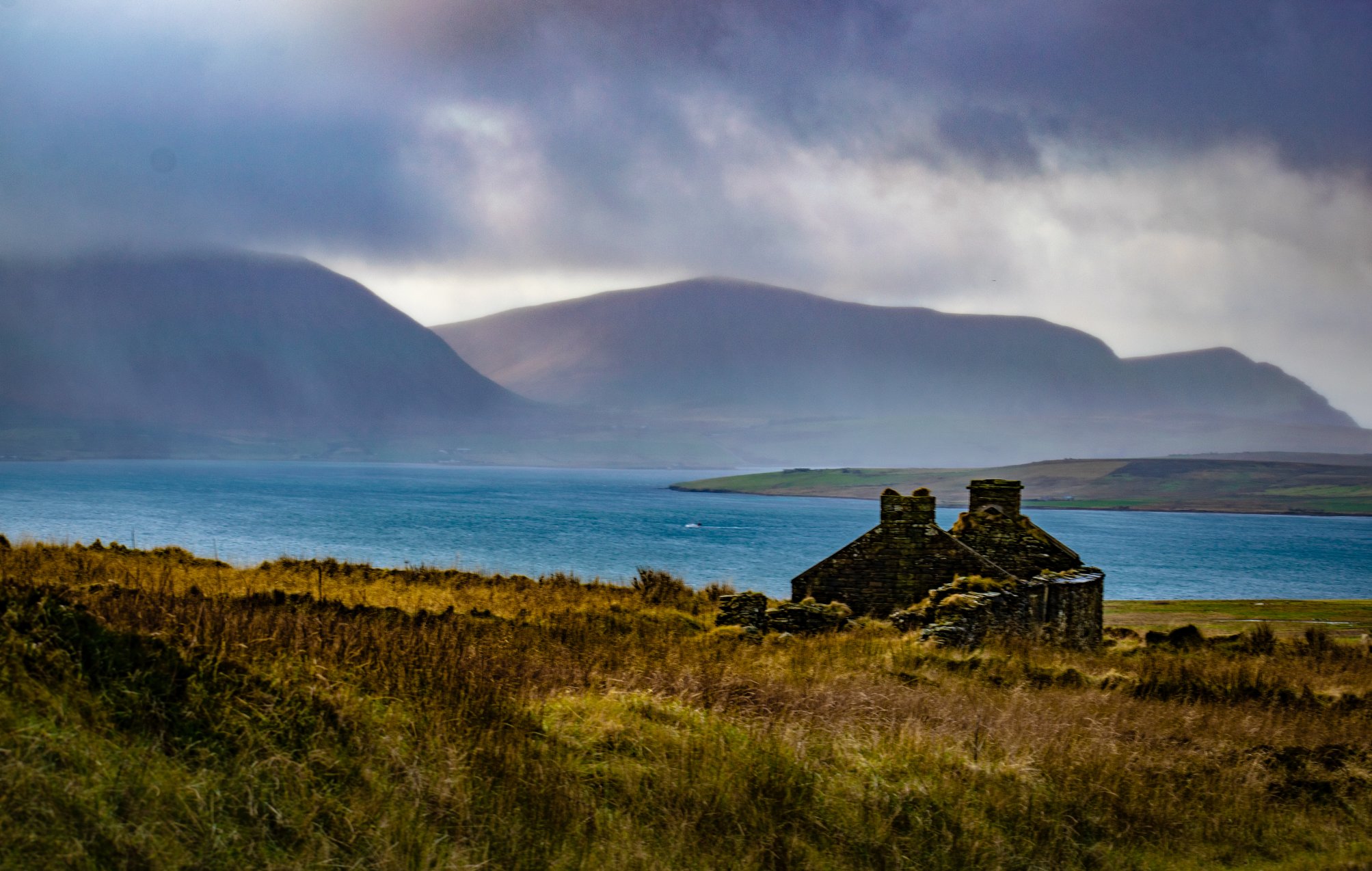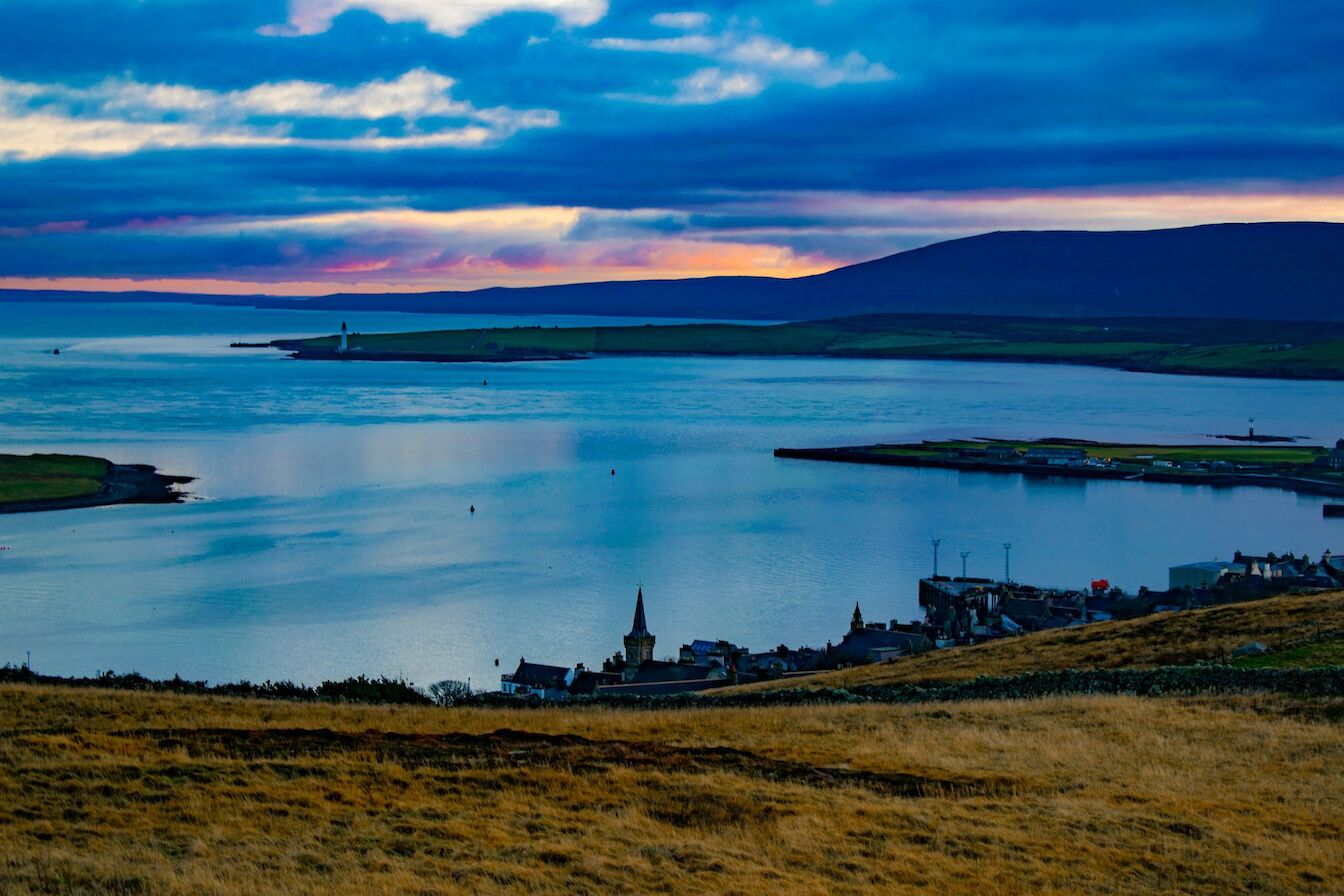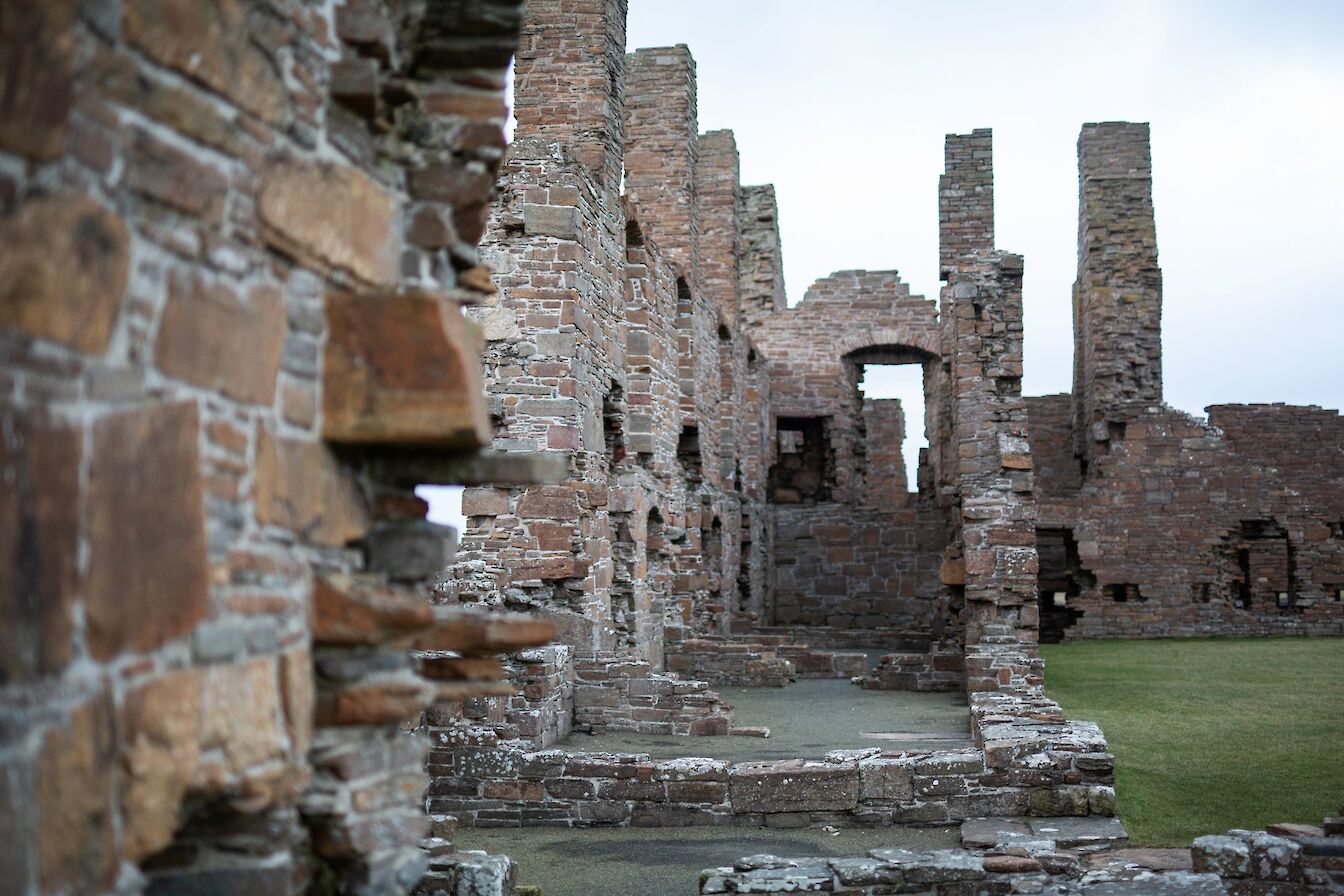Hello and welcome to the April newsletter from Orkney.com.
Usually we'd be bringing you all the details on a busy spring season here in the islands. But instead we're writing to you from an Orkney where, for once, we must ask you not to visit for the time being. You can find more information here.
Many of you will have seen your planned trip to Orkney postponed or even cancelled. Some might be waiting to see what the future brings before making a booking. Rest assured that, once you're able to visit again, we'll give you the warmest Orcadian welcome possible.
In the meantime, as we know you can't be here in person, we're going to keep trying to send you a small slice of island life every month. Hopefully it will bring a smile to your face during these difficult times.
Latest News
Local breweries look to the future
 Small businesses around the world are all currently figuring out how to adapt and survive under increasingly challenging circumstances caused by the coronavirus pandemic. Here in Orkney, the Swannay Brewery is in the middle of a major refurbishment but has seen its pub sales evaporate. Late last month it issued an appeal for support from beer drinkers across the UK and has since sold nearly 700 boxes of beer. It's a similar story at the Orkney Brewery, with a healthy increase in web orders and beer still leaving the islands for bottling. Find out more about the story of both breweries in our blog.
Small businesses around the world are all currently figuring out how to adapt and survive under increasingly challenging circumstances caused by the coronavirus pandemic. Here in Orkney, the Swannay Brewery is in the middle of a major refurbishment but has seen its pub sales evaporate. Late last month it issued an appeal for support from beer drinkers across the UK and has since sold nearly 700 boxes of beer. It's a similar story at the Orkney Brewery, with a healthy increase in web orders and beer still leaving the islands for bottling. Find out more about the story of both breweries in our blog.
Gin distilleries turn their hands to sanitiser
 There certainly seems to be a strong community spirit in evidence during the current situation. With hand sanitiser in high demand, Orkney's gin producers - Deerness Distillery, Orkney Distilling and Orkney Gin Company - quickly began investigating plans to create their own versions in their distilleries. Both Deerness Distillery and Orkney Distilling have managed to get their products out for use in the local community, helping keep local hands clean to combat the spread of coronavirus in Orkney.
There certainly seems to be a strong community spirit in evidence during the current situation. With hand sanitiser in high demand, Orkney's gin producers - Deerness Distillery, Orkney Distilling and Orkney Gin Company - quickly began investigating plans to create their own versions in their distilleries. Both Deerness Distillery and Orkney Distilling have managed to get their products out for use in the local community, helping keep local hands clean to combat the spread of coronavirus in Orkney.
Bringing the makers to you
 Orkney's Creative Trail would normally have opened for business this week, giving visitors the chance to see members of our talented creative community at work in their studios across the islands. Unfortunately, it looks like they won't be able to welcome anyone through their doors this season, but that doesn't mean they're not still hard at work, designing and making beautiful bespoke pieces from their own homes. We thought we'd bring a few of them to you over the coming weeks, starting with Michael Sinclair, Orkney's resident Woodturner. Check out our special blog to find out more.
Orkney's Creative Trail would normally have opened for business this week, giving visitors the chance to see members of our talented creative community at work in their studios across the islands. Unfortunately, it looks like they won't be able to welcome anyone through their doors this season, but that doesn't mean they're not still hard at work, designing and making beautiful bespoke pieces from their own homes. We thought we'd bring a few of them to you over the coming weeks, starting with Michael Sinclair, Orkney's resident Woodturner. Check out our special blog to find out more.
Wild Orkney
Although we can't welcome visitors to the islands at the moment, Orkney's natural world continues as normal. Local wildlife cameraman Raymond Besant has been looking skyward at some of his spring favourites.
I always think spring is a strange season in Orkney. It’s slower to get going than other parts of the UK due of course to our northerly position. There are fewer obvious signs that a kinder season is on its way, especially when snow flurries are still more than possible. Yet some birds are already nest building, Rooks and blackbirds for instance are on eggs. Look out too for the early colour of the shiny yellow petals of Lesser Celandine. You’ll find it lining the damp banks of burns all around Orkney.
But at this time of year it’s also the sounds of nature, as well as the sights, that make our hearts sing.
The wetland pools at RSPB Brodgar, a stone’s throw from the Ring of Brodgar, is a concentrated microcosm of the sounds heard all over Orkney at this time of year. Watch as lapwings tumble and rise, crying out their distinctive call whilst displaying for a mate and stoutly defending their territories. Later in the year they will rise and chase hoodie crows, ravens and gulls away from these nesting areas in order to protect eggs and chicks.

Meanwhile, curlew ‘bubble’ in the margins, teal ‘whistle’ on the foreshore and the song of the skylark is a permanent background delight. Most of the skylarks in Orkney are migrants and numbers steadily rise through February, though one or two do overwinter. I always think there are several things that combine to make a typical Orkney spring day. It’s ‘fresh’ (that is to say it’s windy!), the sky is blue, crisp white clouds are racing past but it’s sunny. It’s bright enough to struggle to see the dot in the sky making that exquisite noise but eventually it lands nearby on a fence post with water from the loch slapping the stones on the shore.
Don’t confuse the skylark with another common bird found in the same habitat - the meadow pipit. They’re similar in colour and shape and both frequent fence posts, but the skylark is a stockier bird and in spring will have a lovely little punk’s crest that sets it apart.

There is no confusing these next two birds, though like the skylark and meadow pipit, it’s possible to see them side by side in a similar habitat. The hen harrier and short-eared owl can both be found hunting in the rough grassland margins of farmland, and breeding in the extensive heather moorland that we are still fortunate to have in Orkney. They compete for a similar food source in the Orkney vole, though the hen harrier is much more adept at catching small birds - like the meadow pipit, rather harshly called the ‘Mountain Mars bar’ by some folk, as everything in the hills wants to eat it!
I’m always loathe to say a natural event is definitely going to happen at a particular time of year. But, with a sunny day in the third week of April, I would say you are almost guaranteed to see one of the most spectacular displays in the bird world - the hen harrier’s ‘skydance’. RSPB Cottascarth is an excellent place to see the display, as well as the nearby Lyde Road on the way to Harray.
You may have to wait a short while but keep your eyes glued to the ridges at the top of hills. You could hear the first signs of the display, a short sharp ‘kee-kee-kee-kee-kee’, before you see any birds. When hunting, hen harriers can appear laconic in flight as they closely quarter the ground, but you’ll notice a slightly different energy in its flight if it’s about to sky dance – it has a certain energy. Ordinarily it is the male bird that engages in sky dancing first, but in Orkney the sex ratio of females to males is skewed and so it’s often females that are seen displaying in order to attract the attentions of a male! If you see a pair of hen harriers flying together, often just circling around together, keep a close eye on them. If one suddenly tumbles then you’re in for a real treat.

Watch as the male dives to the ground, then at the last second uses this energy to bounce skywards, rising 20 or 30 metres then stalling, wings folded, falling back on himself, dropping like a stone then rising once more. Seeing five to ten of these bounces is common as it makes its way along the hillside. If the female is still present, they’ll often interact again in the air, mirroring each other, circling and perhaps mating if alighted in the heather.
Mainland, Hoy and Rousay are its breeding strongholds but it’s possible to see hen harriers almost anywhere in Orkney. Some are lucky enough to almost count harriers as garden birds! These raptors often have hunting routes and patterns that they follow every day, so if you see it one day, you’re likely to see it the next. Come early May though, activity and sightings drop noticeably as birds go down on eggs.
Our other great moorland hunter, the short-eared owl, can also be seen during the day here. It too displays in its attempts to attract a mate but you’ll need a bit of luck to see it. I’ve only seen it on several occasions and it involves the male bird ‘wing clapping’, literally dipping its wings as it flies until they touch at the tips making a surreal and unusual noise.
Both species are going through something of a mix in fortunes. Hen harrier numbers remain fairly steady, though like all birds of prey the weather plays a big part in their breeding success. Heavy rain in May spells disaster for birds on eggs. Our short-eared owls are faring less well; we had around a hundred nests in 2012 and they seemed to be on just about very fence post in late summer. But recently the numbers breeding at known sites were very low, with just eight pairs on the mainland in 2018.
Like the hen harrier, short-eared owls can be found almost anywhere in Orkney, though they are particularly secretive at not revealing where they are nesting. North Isle strongholds include Sanday and Eday, whilst on the mainland the outskirts of Kirkwall, both to the east and west, are great places to start looking.
Described as ‘the ghost of the moor’ by the late Orcadian poet Robert Rendall, seeing a short-eared owl (whose ears aren’t ears at all, just tufts) float past on its quest to find an Orkney vole amongst the tussocks is still a special spring moment. Let’s hope they have a better year this year.
Find out more about Raymond’s work via his official website. You can also find him on Facebook, Twitter and Instagram.
His new book, 'Naturally Orkney Volume 2' is out now, focusing on Orkney's coastline and all the sights and species that can be found there. You can order your copy online.
Focus on photography
Our featured photographer of the month is Robert Towns, a frequent Canadian visitor to Orkney with close ties to the local community.
I cannot remember a time where I didn’t have some kind of camera. My first camera was a film Kodak Brownie which I used to take black and white photos with around my primary school and at home. My family has always had an artistic streak where our visions are brought to life in some way. My Father was a builder of things and my mother still creates amazing pieces of art out of fabric.
Throughout the years I have developed a sense of what kind of photography appeals to me and Orkney really checks all the boxes. I prefer to take photos of landscapes and interesting streets. Orkney’s location at 59-degrees north creates a very special and unique light for taking photos at any time of the year. Summer provides long days in which you can take your time to search out places and try out different shots. In the winter, with sun low on the horizon, there are interesting shadows and beautiful soft lighting.
I am definitely a gadget guy when it comes to my camera equipment. My main camera at the moment is a Nikon D5300, but I also have a GoPro and an Olympus 800. What I really enjoy about taking photos is the social aspect of sharing images on various platforms and seeing both positive and negative comments, as I learn so much from each. My photos are my way of expressing how a place made me feel when I saw it. I love meeting other photographers and I am now part of a worldwide online community where I have had the opportunity to discuss, learn from, and even meet and work with a few fellow photographers in person.
Orkney with its varied landscape and many coastal walks has so many special places for photography. Some of my favourite places to capture are the Yesnaby cliffs and coastal walk, the Ring of Brodgar, the streets of Stromness, as well as any of the accessible beaches, various sites around Orphir and the Brough of Birsay. If landscapes and streetscapes are not your thing, there are so many historical and ancient sites in every corner of Orkney and there is sure to be something special to photograph within steps of where you are at any given time.
If you are going to Orkney with photography in mind, and I do recommend that you go, my advice is to be prepared for the weather. It can sometimes make taking photos challenging, but you will also be rewarded with stunning photos. I, for one, cannot wait to visit Orkney again later this year.
See more of Robert’s images on Instagram.
Explore hidden Orkney
We feature a different ‘off the beaten track’ Orkney location every month. You will have to wait until things return to normal to visit April’s site, but it's still a special place to highlight.
The parish of Birsay is a place that sits squarely at the heart of Orcadian history. The Brough of Birsay, a tidal island found off its north-west coast, was a Viking seat of power, and the St Magnus Kirk in the nearby village is thought to have been the site of Christchurch, where the body of St Magnus was laid to rest.
The village is known locally as ‘Palace’, and even the briefest visit will highlight why. It’s dominated by the ruins of a 16th century castle, built by Earl Robert Stewart, half-brother of Mary, Queen of Scots.

Even despite its derelict nature, it’s easy to see what the building could have been like when in use. It was designed in a Renaissance-style with towers, a turnpike staircase and its four wings surrounding a large courtyard.
It’s understood its interior was opulent, featuring painted ceilings and beautiful wall hangings. But it was also a place prepared for conflict. It was relatively heavily fortified, with gun holes throughout.

Despite its size and design, the palace was only used for a short time. It was built sometime between the late-1560s and mid-1570s, but the overthrow of the Stewart earls in 1615 saw its use come to an end. By 1700 its roof was missing, and this grand palace was in ruin.
Nowadays, it’s a fascinating place to visit, one of those special locations where you can wander in and explore its history in your own time.
And finally...
Thank you for taking the time to read our latest newsletter. We hope it has brought a bit of brightness into your day.
Remember, we’re always keen to hear from you too - share your news, views and comments on the newsletter, Orkney.com and your Orkney experiences with us on Facebook, Twitter, Instagram or E-mail.
We'd also love to know what you'd like to see from Orkney in the coming weeks and months. Share your ideas with us and we'll try our best to help.
In the meantime, it's cheerio from Orkney, for now.
The Promoting Orkney project has been part financed by the Scottish Government and the European Community Orkney LEADER 2014-2020
















